The all too brief Gotham jaunt continued.
After my breakfast of champions I made another foray to the Met.
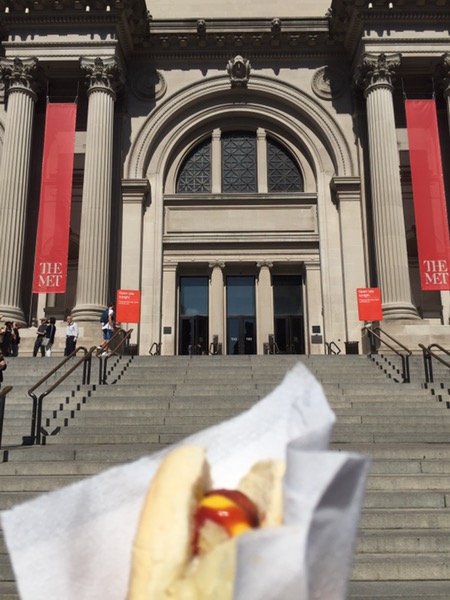
I’ve seen most of the older European collection so often that many of the paintings now greet me by name. Hence, I went to the well-organized and representative Modern section. Mind you, I don’t usual spend time with this stuff, but I have to admit that the Met has a few good rooms which are worth your time… after you see the important stuff.
One thing I have some to understand about myself, to my shock, is that, somewhat against my will, I rather like Jackson Pollack’s drip and pour stuff.
You have to look at it for a while, to get how he made it.
Upstairs, they are repainting the emptied out hallway in preparation for the big Rodin display coming up in mid-September. I must get back for that.
There was an exhibit of WWI art and objects, including propaganda posters. This one is pretty much in your face.
I’d love a version of this for a new league of …say… Clement XIV.
Here is a prototype for an AMERICAN helmet! WWI!
Back downstairs in that area between the medieval hall and the modern building housing the Lehman collection is a fascinating exhibit wherein they show daily and luxury objects and explain what they were worth back in the day as valued against something that held a constant value over a long period of time: a milk cow. How to appraise what some object was worth way back when: figure out how many milk cows it would take to replace it.
A milk cow would have been worth 35 days of pay of a skilled craftsman in London or Antwerp, 59 days for unskilled labor, 27 bushels of wheat in Paris or Vienna, 5350 loaves of rye bread in Brussels. So, if our currency is 1 milk cow….
This early 17th c. German chalice with beautiful angels made for the Speyer cathedral (alas, a 19th c. cup replacement), back in the days would have been valued at 🐄 x 255.
Also, there is an exhibit of a Mexican baroque painted, who really has game. Here is a monumental altarpiece. How they got it in, I have no idea. It depicts – unusually – the Transfiguration above the scene of the Bronze Serpent. Connection? It’s there. Work on it.
Look at the size of this thing relative to that larger than man fountain!
Whew.
Meanwhile, which drink is mine?
In one of my favorite places, Bryant Park, the Marshall Chess Club brought all sorts of gear for people to play chess and backgammon, etc. How cool is that?
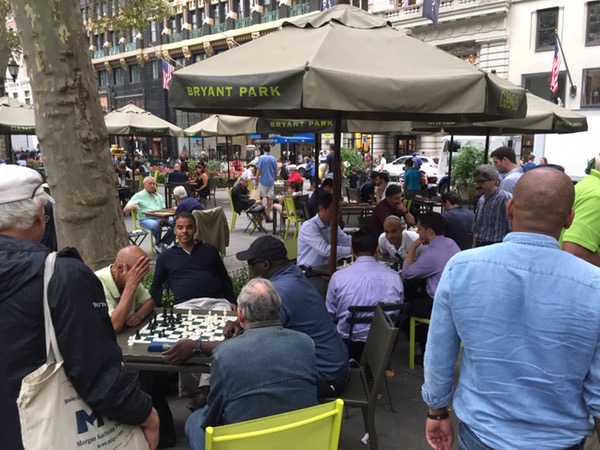
I was sooooo tempted. I’ve been contemplating signing up for the Kasparov course online. I used to play when I was young… a lot. A really whole lot, often. Tournaments, rating, etc. Then…. pffffft… life got busy.
Off to the ecclesiastical trim and fabric place La Lame. I needed appliques for the RED pontifical vestments, especially the humeral veil, which is too bare. Also, I am starting the search for the best trim for the BLUE set. HERE
Supper.
And a walk.
We finally got to Ivan Ramen on the lower East side. This is now firmly on my list of places to return and not just for the ramen!
This was fun: Coney Island Tofu. Not what you expect.
My selection, with an added tomato umami bomb.
It’s kind of a pain to get to, but it’s really good.
Just for nice: my favorite building.
On the way to the airport: CHINESE IN QUEENS
Shumai
Best xiao long bao anywhere.
Crispy beef
And then there are the shredded potatoes and hot peppers.
Then
MY VIEW FOR AWHILE.
Off to the airport.
At security I tried CLEAR for the first time and it worked like a charm.
As always, there is a lot to do here. The weather was magnificent. I got to see some friends, including good ol’ Fr. Murray and CPT G of the NYPD. All in all, a great success, leaving me wanting more.
So… time for a flight home. Will Delta get me there without interesting things happening?

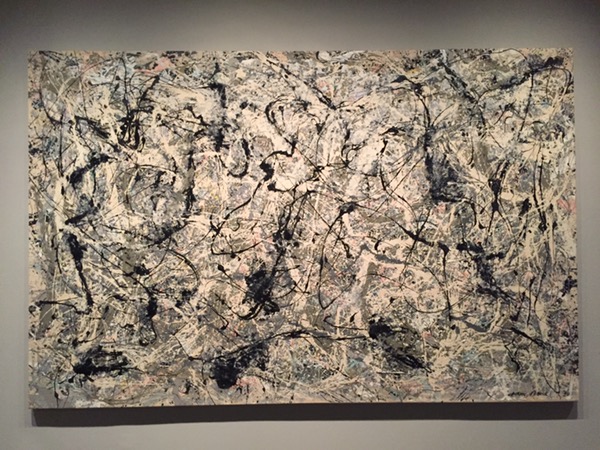

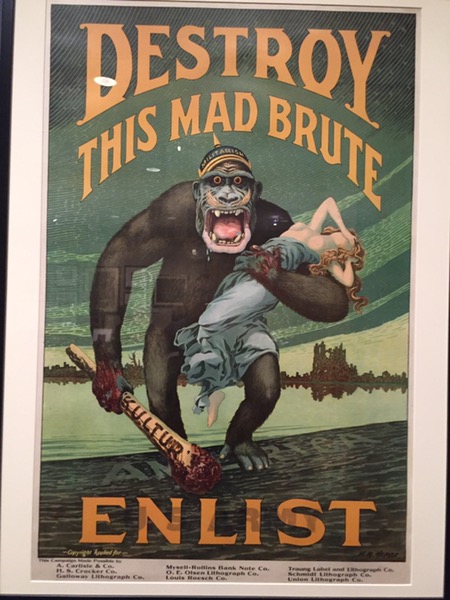

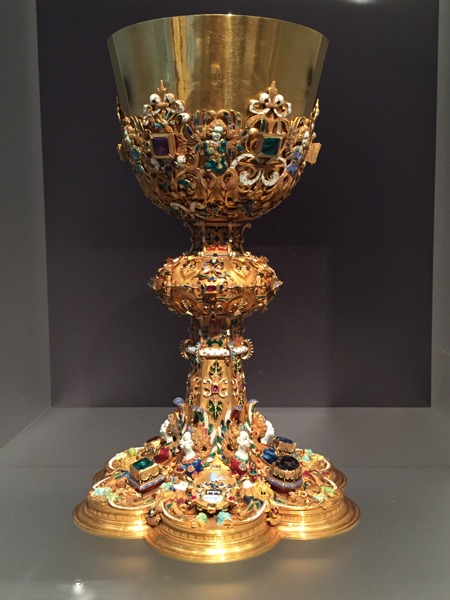


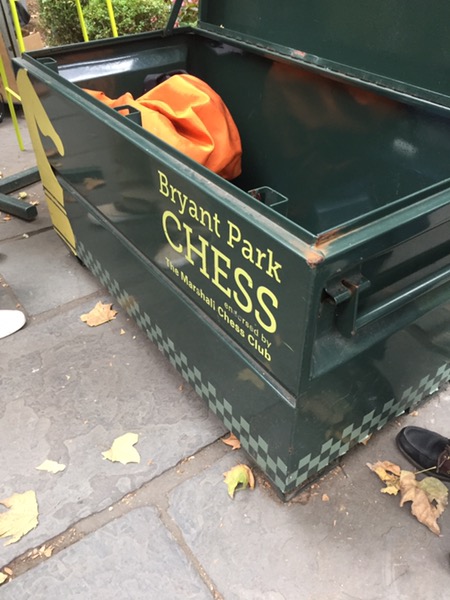
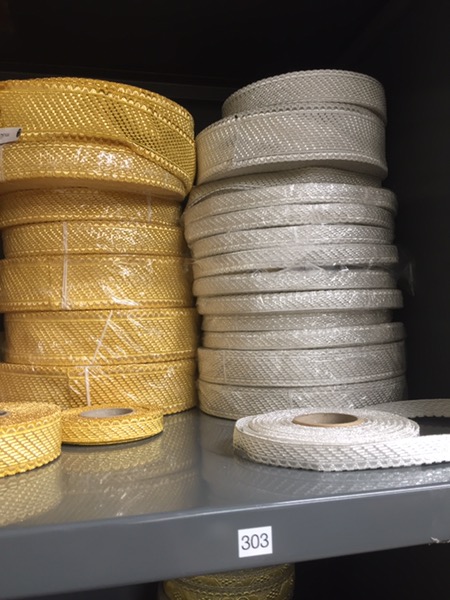

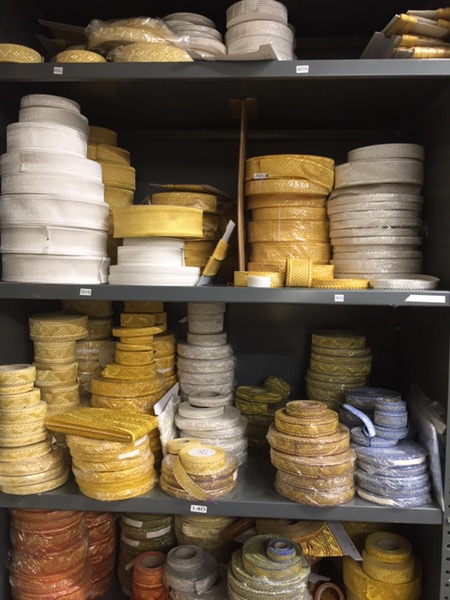




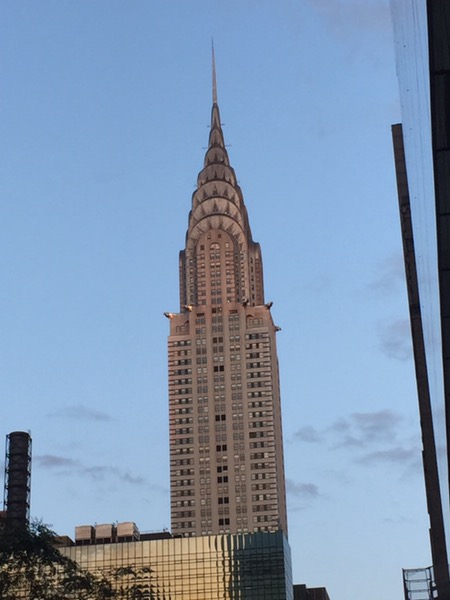






































If enjoy fine art, you must visit the Art Institute in my hometown of Chicago. Beautiful religious art, plenty of Monets and paintings by your new favorite, Jackson Pollock. You’ll have lots of fun and you can visit Cardinal Cupich.
Oh, those dumplings! Mmmm. My guess is that the drink with the flower in it was not yours.
Glad you enjoyed your time, you certainly packed a lot in. Happy, smooth and safe travels.
Interestingly, the poster pictured above was created in 1917 by one Harry Hopps (ref.: http://www.getty.edu/research/exhibitions_events/exhibitions/ww1/). The US Government was not having an easy time recruiting warriors for the European front and this type of ‘in your face’ poster was critical in stirring the hearts of those who were at first hesitant but would then eventually don a uniform.
I have Pollack drip and pour every day on my kitchen counter. The colors and patterns vary, coming from tomatoes, coffee, chocolate, remoulade, pineapple juice, etc.
Tomato umami bombs!
Gosh, Father, that photo of LaLame’s lace inventory revealed both Granby and Bias & Stand silver & gold lace! As an AWI reenactment officer, I use both for my coat’s buttonholes and the edging of my hat! I bet that is where my regular suppliers get it. I also bet I can get it more cheaply there than from middlemen.
Thank you!
Copper cup? What’s in it? On it? Interesting.
That’s my vote
[That was a Moscow Mule.]
Interesting about the milk cow method of determining value. If we take 59 days of unskilled labor, today a minimum wage of $7 an hour x 8 hour day yields about $3300. A quick Google search reveals that milk cows now go for about $900 to $3000, so the 59 days isn’t too far off.
[It was a fascinating exhibit.]
Count me in as a Pollock fan. I think his drip and pour paintings have rhythm and subtle colors in them. Now as for just about all of modern art…….well to be blunt, I loathe it.
Is that candied ginger and lime on the tankered? It looks like it to me.
[Yep!]
Thanks for posting these pictures, Father. I like the very first picture the best; it’s like the hot dog’s own selfie, with the grand entrance to the Met in the background.
We saw the Fra Angelico exhibit when it came to the Met about twelve years ago. Viewed in person, Angelico’s work is seen to be a visual series of contemplative prayers, each one a jewel in its brilliant color and exquisite, loving detail. Heart-stoppingly beautiful to both the eye and the spirit. The exhibit left me with such so wanting to visit The Cloisters, nearby, but there wasn’t time that trip, and we haven’t been to NYC since.
If anyone who likes medieval and Renaissance art comes to Washington, a must-see is the National Art Gallery (the main bldg. rather than the East Wing, which houses for the most part more contemporary work). Visiting Boston – the Isabella Stewart Gardner Museum near Fenway Park – to die for! The entire structure, as well as its contents, is devoted to a veritable festival of rare, costly, and beautiful things – paintings, architecture, landscaping, textiles – which make of the Medieval and Renaissance eras a celebration. And in L.A. – the J. Paul Getty Museum is a can’t miss.
(This post makes me want to pack my bags and endure a Delta trip right now!)
P.S. We just returned from a cross-country Delta-ism. The first leg of the outbound trip was delayed so much that we were to be left with only a 20-minute connection window in ATL, one of the most sprawling airports on the Eastern seaboard. No way! So we bagged it, re-booked for the next day, and went home for the night, already travel-weary, but no closer to our destination than when we had awoken. Luckily, our luggage was waiting for us the next day at our final destination, with no problem.
On one leg, Delta supplied a piece of “equipment”* (aircraft) that was so small and tight inside that it seemed to me that a kid with a slingshot could bring us down.
*Note: when your gate attendant grabs the loudspeaker and you hear the word “equipment,” you can know to expect delays of 30 mins. minimum. And, of course, the words coming over the loudspeaker are usually so garbled and echo-ey, that it comes out like, “farf-woobledy-wooble waiting ag-whubble equipment, and we’re hoping to harg-snatter hayben unsublagen to delay wayrgo-fluffle. Thanks for your patience”
Meanwhile, which drink is mine?
All of them?
TRIM FOR BLUE SET
Have Ed Schneer show you some red intertwined with gold trim. Or look through a Pugin book. He masterfully used combinations of red, white, blue, and green with stunning results. It also keeps it from being another cliche vestment.
[Interesting idea.]
“Orsnge” or shades in that line of light reds are also stunning and very medieval
“The mind that alters, alters all.” ~William Blake
And boy did Jackson Pollack alter. Sorry, but I have no love for Jackson Pollack. He brought nothing but laziness to the world of art, and helped set the course for the modern, and post-modern, junk that we’re stuck with today. As far as I’m concerned, after a good 400-year run, the painting arts died circa WWI.
[No… I’m not going to agree that Jackson Pollock was “lazy”. The Pollack above went through many stages to complete. I read that the back of the canvas shows drawing in black and yellow that can’t be seen from the front. There were figures now obscured by the web. There is a layer of gray and olive green with some pink, yellow and blue. The top layer is mainly white and black with gray to tie the layers together. It attains a kind of symmetry through balancing asymmetrical shapes. I don’t think this is lazy.]
Re: the altarpiece. The fiery serpent is a type of the crucifixion (according to Jesus, anyway : “And as Moses lifted up the serpent in the wilderness, even so must the Son of man be lifted up”); and at the Transfiguration, Moses and Elias talked with the Lord “of his decease which he should accomplish at Jerusalem.”
What drink is mine? Second from left the Moscow Mule or some version thereof. So refreshing in the heat of summer! My son likes the Kentucky Mule version with bourbon. Cheers!
Roy, I’m with you on modern art. I’m not a fan of abstract impressionism, or expressionism, etc., nor of photorealistic paintings that present bleak, wretched, depressing, or dispiriting subjects or moods.
It’s not easy to find 20th-21st century painters who have all of these accomplishments: a knack for painting reality, superb draftsmanship, an expert understanding of how to see and handle light and shadow, a brilliant use of color, a wonderful grasp of composition and scale, and a splendid knowledge of how to paint. And I would add: an inclination to choose beautiful and graceful subjects instead of dispiriting ones.
There are a few 20th to 21st century painters who seem to have many of these qualities; some (not all) of their paintings exhibit them. The works of Andrew Wyeth, Hans Hartong, Richard Estes, Tim O’Brien are worth taking a look at. You may appreciate some of these.
I hope you enjoy the search! They’re out there, Roy!
While I agree that some artists have chosen to make their works in such a way as to dispirit people (and some very inept would-be artists may have made such works inadvertently), I disagree as to the notion of a “dispiriting subject“, or the idea that works of art must be censored (as it were) according to their subject (properly so-called).
The whole world was created by God; hence, no topic from the world, no matter how morbid it is, no matter however gruesome it is, no matter how much it has to do with depiction of sin, is incapable of being used in an uplifting manner. [I’m not sure about Francis Bacon and Willem de Kooning… brrrrrrr]
And proof of it is the gargoyle on the Cathedral’s façade.
(See, G. K. Chesterton, “On Gargoyles” from: Alarums and Discursions)
Pingback: Canon212.com Update: What Religion are These FrancisBishops? – The Stumbling Block
Imrahil, I’m sorry my writing above was unclear: I should clarify that I’m no advocate of government censorship. I hope it goes without saying that to say “I’m not a fan” of something doesn’t rise to the level of saying, “I wish the government would clamp down on” that thing.
I have to tell you that I don’t believe God created death or disease, poverty, disease, injury, oppression and misery, or injustice. Those things entered the world when Adam and Eve chose to turn their backs on God’s will, and do as they pleased. It is as if, in a way, the good God, who is omnipresent, for unfathomable but perfectly loving reasons of His own, has willed to withdraw a part of His holiness, His life-giving Presence from a small piece of the Universe – from my knee, my Mom’s nerves, my neighbor’s cancer, from the sites of natural disasters such as that unfolding in Houston, Texas, and earlier, from human disasters such as we saw in Charlottesville, VA., and to permit a certain amount of evil to seep into the vacuum, so to speak. None of these things would have happened had not Adam and Eve sinned, and I believe they continue to happen as often as they do, because so many men and women alive today neither love Him nor seek Him with all their hearts. I believe it’s our continuing lack of love for God and for one another that perpetuates suffering, death, and evil in this world. (And not that *this* person or *this* family or *this* community is more guilty of these deficits than someone or”some-ones” else, but that the sins of mankind in general call down upon this or that family or community this moderated attenuation of God’s loving protection.)
I’m not sure that you and I mean the same thing when we employ the word “uplifting.” When I say “uplifting” I mean to speak of the characteristic of a thing which tends to draw us toward “whatever is good; whatever is gracious; whatever has excellence; whatever is lovely; whatever is worthy of praise.” I don’t believe the exhibition of images depicting that which is gruesome or horrific can be in any way draw us toward the good and the lovely, and thus cannot truly be “uplifting.”
But that’s just me.
Your mileage may vary.
Dear Marion Ancilla Mariae,
it seems me that was unclear. When I said “censorship” I meant self-censorship (in what I am going to look at), stylebook-censorship (in what is ousted by polite, artistically cultured society as off the bounds) and Church-censorship (in what is preached against as certainly dangerous and possibly sinful – to look at, not to reproduce in life, of Course), not “government censorship”. Now I did use the word because all of them are, in a manner, censorships, sometimes more, sometimes less formal; the latter, in a State that doesn’t overstep its bounds, only adds penalties to some among those “reckless guys” who don’t abide by the former.
I never thought you would use the police to ban art you don’t like. I also never thought, coincidentally, that you would use the police to make people fulfil their Sunday duty. But you did give the Impression that certain works of art and, which was my specific Point, even certain subject-matters are to be avoided, police or no police, just as surely and definitely as the Sunday duty is to be fulfilled.
Dear Marion Ancilla Marie on our actual point,
I have to tell you that I don’t believe God created death or disease, poverty, disease, injury, oppression and misery, or injustice. Those things entered the world when Adam and Eve chose to turn their backs on God’s will
well, yes (though maybe about the specific point of “death” some distinctions would have to be made). But sin did enter the word with God’s “permission” (the word taken literally). And why? Because there are goods that otherwise couldn’t have entered the world, as St. Augustine and St. Thomas teach us. So, this does belong to this world, and one day in God’s good eternity we will see how even this evil, evil though it is – the permission of it, I should say – have served to make the world a more beautiful place.
In the meantime, so much is clear that we cannot appreciate the beauty that is there if we have to (forgive-me) go into make-believe that it is the only thing there. I do not of course say that every work of art must have ist gruesomeness attached; the world does contain beauty, after all. But excluding gruesome and horrific subject-matters on principle and without exception, that is another matter.
As for “uplifting”, we have the same definition or at least almost the same.
And as for your Assertion that gruesome and horrific subject-matters cannot possibly be used in an uplifting (be it “really uplifting”, be it “upliftingly entertaining”) manner no matter the good will and skill of the Artist – I note you did specifically not say “in many cases” or “in most cases”, whereon I should have remained silent not knowing the statistics, but you said “I don’t believe [i] […] can be [done] in any way [so as to] draw us toward the good and the lovely”, and I can only make myself clear by repetition: yes, it can.
An example from building is the gargoyle, as I said.
A famous example from writing is G. A. Bürger’s Lenore, of E. A. Poe and Bram Stoker quotation fame, to which I link a translation here (though in the original, it’s not a crusade but the Seven Year’s War William rides into): https://en.wikisource.org/wiki/Lenora_(Taylor)
One other example from writing would be later-on Catholic convert Alfred Döblin’s Berlin Alexanderplatz, which manages to present the story of a criminal just released from prison where he had sat for second-degree murder, and who depends on the money of his loveress who is a prostitute, sometimes commits crimes for the money and generally struggles with life – and does so in an uplifting manner.
An example from painting is the whole Ecce homo Topos including the very fitting drastic depictions it has received from, e. g., by Lovis Corinth.
Examples from music would be The Man Comes Around, Oh no I see a Darkness, The Mercy Seat and Ghost Riders in the Sky, all from Johnny Cash, originals by whomever.
Imrahil – another example to your point, the Pieta, which is very uplifting, yet depicts the horror of the innocent Christ’s death.
I’m sure you’re right that the gruesome can be capable of uplifting. I wouldn’t know, though. I do unashamedly self-censor, steering well clear of anything I don’t like, and many women and girls I know do, as well. We would be the very sensitive types. According to some theologians, it is a perfection of the female to be emotionally sensitive themselves so as to help them to be protective of the developing psyches of their babies and toddlers. Small children are very upset by what is gruesome or hideous or scandalous in life or in art, and many older girls are, too.
I’m the type who delights in reading to small children, singing them songs, etc., and I don’t tend to like things that would upset them, even when they’re not around. Not all women are like my type, though.
A pre-teen boy may argue the efficiency of his digestive system by proclaiming, “One time I ate a dead frog, I didn’t froe up, or nuffin!” thus sending his sensitive sisters and their friends running, shrieking in the opposite direction in paroxysms of disgust. To the boy’s bewilderment; he thought they would be impressed. (Some girls are the tom-boy type, and wouldn’t be put off by this sort of talk.)
My husband might have been like that boy when he was small, yet he says he always wanted for his wife a “Breck girl” type: feminine, gentle, focussed on what is sweet and lovely, one to be protected.
So . . . it’s a bit of a puzzle.
Many mature females can appreciate art in which the gruesome or hideous may be alluded to, referred to, or briefly touched upon, but without any graphic representation. Other women – the tough-as-nails type – wouldn’t care to have any such limitations. But they may not enjoy being around little ones much, either.
I’m not the tough-as-nails type, and have to rely on God for my strength.
And God bless you, Imrahil, and all here.
Great WWI enlistment poster. That is one manly helmet…one wonders how to attach a gas mask to that. But I like their medieval spirit.
Fr. Z and readers: Wildly off topic but way too cool. I have the first Aubrey-Maturin book out here. [OORAH!] An excellent read. And a colleague, a fine fellow, just handed me what looks like the first novel in a new series by James Haley. It’s called: The Shores of Tripoli: Lieutenant Putnam and the Barbary Pirates. It looks like the intrepid Lt. Putnam serves on the USS Enterprise and Constitution, then goes amphibious and hikes across Libya with the Marines to give the pirates what for. Way. Too. Cool.
[Aubrey/Maturin are never off-topic. For that and the Marine books reference…]
US HERE – UK HERE
Dear Marion Ancilla Mariae,
interesting points, and thanks for the blessing.
That said, “upsetting the children” seems a rather adult idea. Chesterton observed that children don’t mind being told about a Dragon, having known about Dragons for all their life; only the Dragon must be killed at the end: for they have not known about St. George for all their life… And if I take a look at the kind of tales chiefly associated with telling to children, fairy-tales, then I remember from my childhood own when we were on vacation and I read The Juniper Tree in Low German (thinking, at the time, it was English, and very proud of understanding this foreign language ;-) ), and can only conclude he was right.
Imrahil, a friend of mine had a little boy who, when he was 4 or 5 years old, enjoyed tales of goblins and dragons, and didn’t mind them one bit, (and you’re right, the dragon was always vanquished at the end of the story), but my friend was up all night with her inconsolable boy who couldn’t sleep with anxiety, after having been allowed to watch a so-called kid’s movie like _Ghost Busters_.
To touch upon a scary topic in a story, sitting safely with Mama and Papa, is one thing. To take in visual images of-in-your face hellish monsters on the big screen is quite another.
Very sensitive women understand this difference almost instinctually. Little ones can’t process some things in the way that adults can, and women geared toward the care and rearing of little ones shy away from such things, as well.